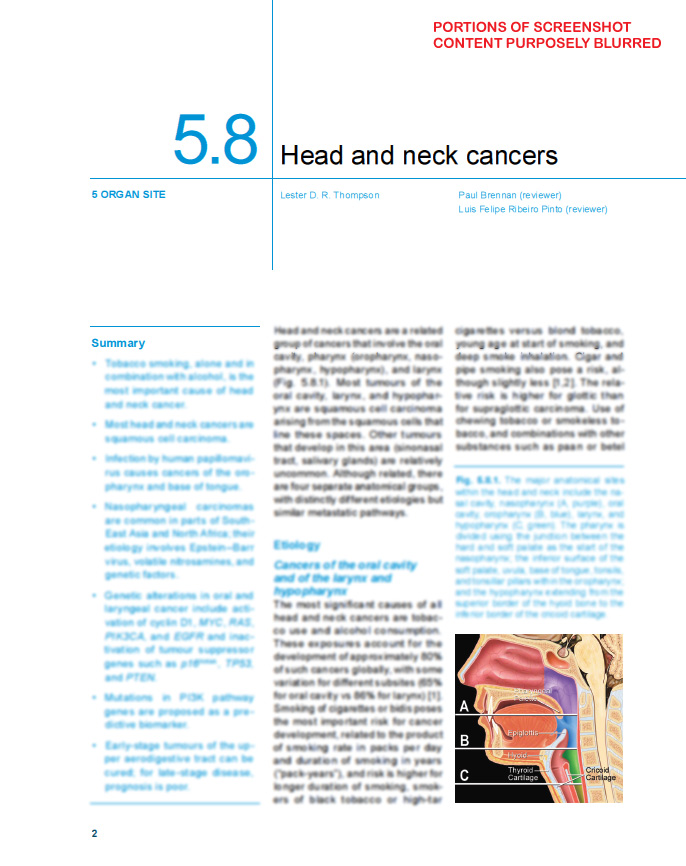Thompson LD, Seethala RR, Müller S.
Head Neck Pathol. 2012 Mar;6(1):75-100.
Ectopic sphenoid sinus pituitary adenoma (ESSPA) may arise from a remnant of Rathke’s pouch. These tumors are frequently misdiagnosed as other neuroendocrine or epithelial neoplasms which may develop in this site (olfactory neuroblastoma, neuroendocrine carcinoma, sinonasal undifferentiated carcinoma, paraganglioma, melanoma). Thirty-two patients with ESSPA identified in patients with normal pituitary glands (intact sella turcica) were retrospectively retrieved from the consultation files of the authors’ institutions. Clinical records were reviewed with follow-up obtained. An immunohistochemical panel was performed on available material. Sixteen males and 16 females, aged 2-84 years (mean, 57.1 years), presented with chronic sinusitis, headache, obstructive symptoms, and visual field defects, although several were asymptomatic (n = 6). By definition, the tumors were centered within the sphenoid sinus and demonstrated, by imaging studies or intraoperative examination, a normal sella turcica without a concurrent pituitary adenoma. A subset of tumors showed extension into the nasal cavity (n = 5) or nasopharynx (n = 9). Mean tumor size was 3.4 cm. The majority of tumors were beneath an intact respiratory epithelium (n = 22), arranged in many different patterns (solid, packets, organoid, pseudorosette-rosette, pseudopapillary, single file, glandular, trabecular, insular). Bone involvement was frequently seen (n = 21). Secretions were present (n = 16). Necrosis was noted in 8 tumors. The tumors showed a variable cellularity, with polygonal, plasmacytoid, granular, and oncocytic tumor cells. Severe pleomorphism was uncommon (n = 5). A delicate, salt-and-pepper chromatin distribution was seen. In addition, there were intranuclear cytoplasmic inclusions (n = 25) and multinucleated tumor cells (n = 18). Mitotic figures were infrequent, with a mean of 1 per 10 HPFs and a <1% proliferation index (Ki-67). There was a vascularized to sclerotic or calcified stroma. Immunohistochemistry highlighted the endocrine nature of the tumors, with synaptophysin (97%), CD56 (91%), NSE (76%) and chromogranin (71%); while pan-cytokeratin was positive in 79%, frequently with a dot-like Golgi accentuation (50%). Reactivity with pituitary hormones included 48% reactive for 2 or more hormones (plurihormonal), and 33% reactive for a single hormone, with prolactin seen most frequently (59%); 19% of cases were non-reactive. The principle differential diagnosis includes olfactory neuroblastoma, neuroendocrine carcinoma, melanoma, and meningioma. All patients were treated with surgery. No patients died from disease, although one patient died with persistent disease (0.8 months). Surgery is curative in the majority of cases, although recurrence/persistence was seen in 4 patients (13.8%). In conclusion, ESSPAs are rare, affecting middle aged patients with non-specific symptoms, showing characteristic light microscopy and immunohistochemical features of their intrasellar counterparts. When encountering a tumor within the sphenoid sinus, ectopic pituitary adenoma must be considered, and pertinent imaging, clinical, and immunohistochemical evaluation undertaken to exclude tumors within the differential diagnosis. This will result in accurate classification, helping to prevent the potentially untoward side effects or complications of incorrect therapy.
PubMed ID: 22430769
Article Size: 4 MB

